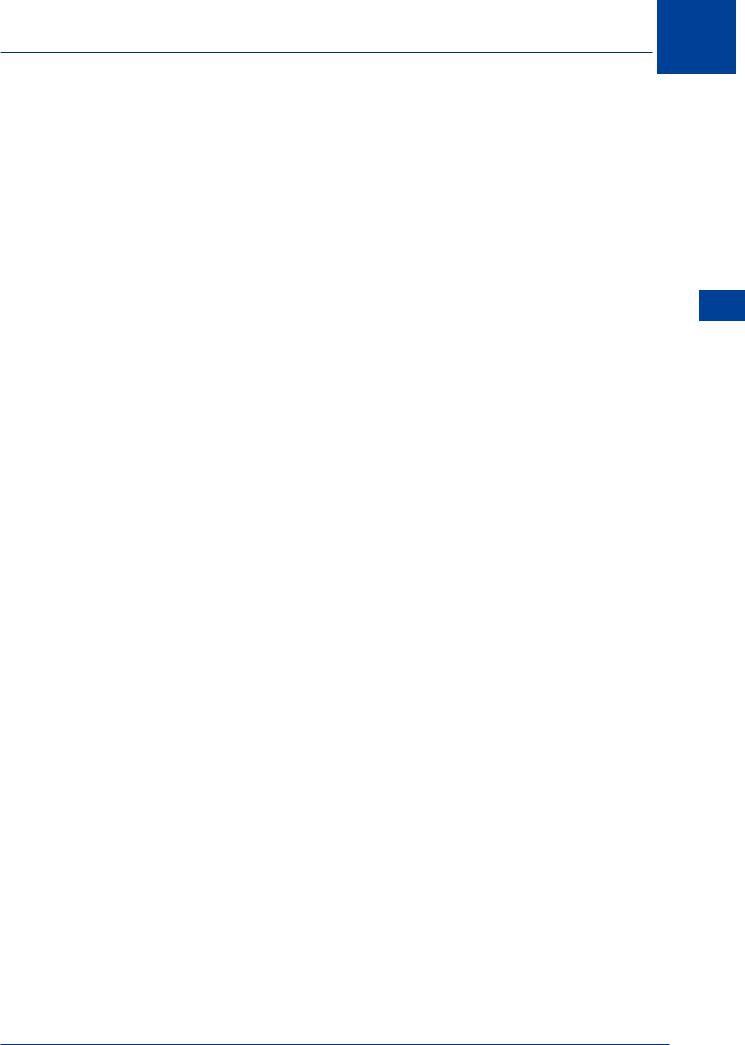
- •Textbook Series
- •Contents
- •1 Basic Concepts
- •The History of Human Performance
- •The Relevance of Human Performance in Aviation
- •ICAO Requirement for the Study of Human Factors
- •The Pilot and Pilot Training
- •Aircraft Accident Statistics
- •Flight Safety
- •The Most Significant Flight Safety Equipment
- •Safety Culture
- •Reason’s Swiss Cheese Model
- •The Five Elements of Safety Culture
- •Flight Safety/Threat and Error Management
- •Threats
- •Errors
- •Undesired Aircraft States
- •Duties of Flight Crew
- •2 The Circulation System
- •Blood Circulation
- •The Blood
- •Composition of the Blood
- •Carriage of Carbon Dioxide
- •The Circulation System
- •What Can Go Wrong
- •System Failures
- •Factors Predisposing to Heart Attack
- •Insufficient Oxygen Carried
- •Carbon Monoxide
- •Smoking
- •Blood Pressure
- •Pressoreceptors and their Function Maintaining Blood Pressure
- •Function
- •Donating Blood and Aircrew
- •Pulmonary Embolism
- •Questions
- •Answers
- •3 Oxygen and Respiration
- •Oxygen Intake
- •Thresholds of Oxygen Requirements Summary
- •Hypoxic Hypoxia
- •Hypoxic Hypoxia Symptoms
- •Stages/Zones of Hypoxia
- •Factors Determining the Severity of and the Susceptibility to Hypoxic Hypoxia
- •Anaemic Hypoxia
- •Time of Useful Consciousness (TUC)
- •Times of Useful Consciousness at Various Altitudes
- •Effective Performance Time (EPT)
- •Hyperventilation
- •Symptoms of Hyperventilation
- •Hypoxia or Hyperventilation?
- •Cabin Pressurization
- •Cabin Decompression
- •Decompression Sickness (DCS)
- •DCS in Flight and Treatment
- •Questions
- •Answers
- •4 The Nervous System, Ear, Hearing and Balance
- •Introduction
- •The Nervous System
- •The Sense Organs
- •Audible Range of the Human Ear and Measurement of Sound
- •Hearing Impairment
- •The Ear and Balance
- •Problems of Balance and Disorientation
- •Somatogyral and Somatogravic Illusions
- •Alcohol and Flying
- •Motion Sickness
- •Coping with Motion Sickness
- •Questions
- •Answers
- •5 The Eye and Vision
- •Function and Structure
- •The Cornea
- •The Iris and Pupil
- •The Lens
- •The Retina
- •The Fovea and Visual Acuity
- •Light and Dark Adaptation
- •Night Vision
- •The Blind Spot
- •Stereopsis (Stereoscopic Vision)
- •Empty Visual Field Myopia
- •High Light Levels
- •Sunglasses
- •Eye Movement
- •Visual Defects
- •Use of Contact Lenses
- •Colour Vision
- •Colour Blindness
- •Vision and Speed
- •Monocular and Binocular Vision
- •Questions
- •Answers
- •6 Flying and Health
- •Flying and Health
- •Acceleration
- •G-forces
- •Effects of Positive G-force on the Human Body
- •Long Duration Negative G
- •Short Duration G-forces
- •Susceptibility and Tolerance to G-forces
- •Summary of G Tolerances
- •Barotrauma
- •Toxic Hazards
- •Body Mass Index (BMI)
- •Obesity
- •Losing Weight
- •Exercise
- •Nutrition and Food Hygiene
- •Fits
- •Faints
- •Alcohol and Alcoholism
- •Alcohol and Flying
- •Drugs and Flying
- •Psychiatric Illnesses
- •Diseases Spread by Animals and Insects
- •Sexually Transmitted Diseases
- •Personal Hygiene
- •Stroboscopic Effect
- •Radiation
- •Common Ailments and Fitness to Fly
- •Drugs and Self-medication
- •Anaesthetics and Analgesics
- •Symptoms in the Air
- •Questions
- •Answers
- •7 Stress
- •An Introduction to Stress
- •The Stress Model
- •Arousal and Performance
- •Stress Reaction and the General Adaption Syndrome (GAS)
- •Stress Factors (Stressors)
- •Physiological Stress Factors
- •External Physiological Factors
- •Internal Physiological Factors
- •Cognitive Stress Factors/Stressors
- •Non-professional Personal Factors/Stressors
- •Stress Table
- •Imaginary Stress (Anxiety)
- •Organizational Stress
- •Stress Effects
- •Coping with Stress
- •Coping with Stress on the Flight Deck
- •Stress Management Away from the Flight Deck
- •Stress Summary
- •Questions
- •Answers
- •Introduction
- •Basic Information Processing
- •Stimuli
- •Receptors and Sensory Memories/Stores
- •Attention
- •Perception
- •Perceived Mental Models
- •Three Dimensional Models
- •Short-term Memory (Working Memory)
- •Long-term Memory
- •Central Decision Maker and Response Selection
- •Motor Programmes (Skills)
- •Human Reliability, Errors and Their Generation
- •The Learning Process
- •Mental Schema
- •Questions
- •Answers
- •9 Behaviour and Motivation
- •An Introduction to Behaviour
- •Categories of Behaviour
- •Evaluating Data
- •Situational Awareness
- •Motivation
- •Questions
- •Answers
- •10 Cognition in Aviation
- •Cognition in Aviation
- •Visual Illusions
- •An Illusion of Movement
- •Other Sources of Illusions
- •Illusions When Taxiing
- •Illusions on Take-off
- •Illusions in the Cruise
- •Approach and Landing
- •Initial Judgement of Appropriate Glideslope
- •Maintenance of the Glideslope
- •Ground Proximity Judgements
- •Protective Measures against Illusions
- •Collision and the Retinal Image
- •Human Performance Cognition in Aviation
- •Special Situations
- •Spatial Orientation in Flight and the “Seat-of-the-pants”
- •Oculogravic and Oculogyral Illusions
- •Questions
- •Answers
- •11 Sleep and Fatigue
- •General
- •Biological Rhythms and Clocks
- •Body Temperature
- •Time of Day and Performance
- •Credit/Debit Systems
- •Measurement and Phases of Sleep
- •Age and Sleep
- •Naps and Microsleeps
- •Shift Work
- •Time Zone Crossing
- •Sleep Planning
- •Sleep Hygiene
- •Sleep and Alcohol
- •Sleep Disorders
- •Drugs and Sleep Management
- •Fatigue
- •Vigilance and Hypovigilance
- •Questions
- •Answers
- •12 Individual Differences and Interpersonal Relationships
- •Introduction
- •Personality
- •Interactive Style
- •The Individual’s Contribution within a Group
- •Cohesion
- •Group Decision Making
- •Improving Group Decision Making
- •Leadership
- •The Authority Gradient and Leadership Styles
- •Interacting with Other Agencies
- •Questions
- •Answers
- •13 Communication and Cooperation
- •Introduction
- •A Simple Communications Model
- •Types of Questions
- •Communications Concepts
- •Good Communications
- •Personal Communications
- •Cockpit Communications
- •Professional Languages
- •Metacommunications
- •Briefings
- •Communications to Achieve Coordination
- •Synchronization
- •Synergy in Joint Actions
- •Barriers to Crew Cooperation and Teamwork
- •Good Team Work
- •Summary
- •Miscommunication
- •Questions
- •Answers
- •14 Man and Machine
- •Introduction
- •The Conceptual Model
- •Software
- •Hardware and Automation
- •Intelligent Flight Decks
- •Colour Displays
- •System Active and Latent Failures/Errors
- •System Tolerance
- •Design-induced Errors
- •Questions
- •Answers
- •15 Decision Making and Risk
- •Introduction
- •The Mechanics of Decision Making
- •Standard Operating Procedures
- •Errors, Sources and Limits in the Decision-making Process
- •Personality Traits and Effective Crew Decision Making
- •Judgement Concept
- •Commitment
- •Questions
- •Answers
- •16 Human Factors Incident Reporting
- •Incident Reporting
- •Aeronautical Information Circulars
- •Staines Trident Accident 1972
- •17 Introduction to Crew Resource Management
- •Introduction
- •Communication
- •Hearing Versus Listening
- •Question Types
- •Methods of Communication
- •Communication Styles
- •Overload
- •Situational Awareness and Mental Models
- •Decision Making
- •Personality
- •Where We Focus Our Attention
- •How We Acquire Information
- •How We Make Decisions
- •How People Live
- •Behaviour
- •Modes of Behaviour
- •Team Skill
- •18 Specimen Questions
- •Answers to Specimen Papers
- •Revision Questions
- •Answers to Revision Questions
- •Specimen Examination Paper
- •Answers to Specimen Examination Paper
- •Explanations to Specimen Examination Paper
- •19 Glossary
- •Glossary of Terms
- •20 Index

Stress 7
•Religious Practice
For many people some form of religious practice will help to cope with stress, particularly if it is a major life event such as bereavement, accident or chronic illness. There are, however, some possible dangers if the particular belief is of a fatalistic nature. “It is in the hands of God” may prevent some individuals from trying to resolve their own problems.
•Counselling Techniques
Many individuals will benefit not only from professional counselling but also from just talking to their friends or colleagues. It will help to reduce feelings of inadequacy if they know that others find a particular task difficult.
The basic principle behind counselling is that, since stress is caused by an individual’s perception of a situation, the stress will be reduced if the individual can be made to change the way he/ she perceives or reacts to the situation by changing or modifying his/her beliefs or assumptions about the event (cognitive coping). Counselling may also assist an individual to see that some behavioural change may be necessary (action coping), and help bring about that change.
An individual, such as a pilot, who must demonstrate authority and control in his work may show some reluctance to ‘admit’ that he is experiencing problems with stress. He may fear that the admission of being under stress might be interpreted as weakness or a lack of competence. All pilots should be aware that stress can influence performance on the flight deck, particularly in an emergency, and take positive steps to deal with the stress if they feel they are affected by it.
Note: Evidence that people under stress often smoke more, overeat or increase alcohol/caffeine consumption has led to the theory that apparent self-abusive behaviours may actually be forms of stress management.
Stress Summary
Stress is simply a fact of life. We all require some stress to activate our nervous system, to stimulate us and allow us to adapt. It is only when the stress is high or sudden that it can become destructive and may exceed our abilities to adapt. Stress encountered in our daily lives is cumulative and depletes our reserves. However, a lack of stimuli may be just as bad since this encourages anxiety.
Although it is extremely difficult to eliminate stress, we can, through training and other techniques, increase our resistance to it. Stress coping can be either short-term (action coping) or long-term Stress Management (a change of lifestyle or counselling) depending on the situation. The first step is, however, to recognize and admit to oneself that the condition exists.
Although the stress mechanism is mainly physiological and triggered as a defence mechanism to help us survive, coping strategies to deal with stress are mainly psychological.
To increase stress tolerance the chief weapons in your armoury are:
•Experience (fewer unexpected situations).
•Learning (reflex responses are performed correctly, even under stress).
•CRM (using all resources available).
Stress 7
139

7 Questions
Questions 7
Questions
1.Having successfully overcome a stressful situation once, how will the person react if placed in the same or similar situation a second time?
a.There will be little difference
b.He/she will know what is ahead and be already in a stressful condition thus stress will increase
c.He/she will feel more confident and therefore stress will reduce
d.It will depend on the individual
2.How is performance affected by over and under arousal?
a.It is improved
b.There is little difference
c.It is degraded
d.It will depend on the individual
3.What is the purpose of the “sympathetic” nervous system?
a.To control the emotional response under stressful conditions
b.To control the effects of adrenalin
c.To return the body to homeostasis after the “fight or flee” syndrome
d.To prepare the body for “fight or flight”
4.What is the purpose of the “parasympathetic” nervous system?
a.To prolong the body’s mobilisation and return the body to normal after the “fight or flight” syndrome
b.To prepare the body for “fight or flee”
c.To direct the adrenalin to the correct organs of the body
d.To return the body to normal after an emotional response under stressful conditions
5.What part of the body is affected with the vibration in the 4 to 10 Hz frequency range?
a.The brain plus there will be a headache
b.The chest plus there will be an abdominal pain
c.The respiration plus pains in the chest
d.The pulse rate
6.Which graph shows the relationship between arousal and performance?
a.A U-shaped graph
b.An inverted U-shaped graph
c.A straight line graph
d.An M-shaped graph
7.The three phases of the GAS Syndrome are:
a.alarm, fear, resistance
b.alarm, resistance, exhaustion
c.alarm, fear, exhaustion
d.fear, resistance, exhaustion
140

|
|
Questions |
|
7 |
|
|
8. |
Which life stressor is said to cause the most stress? |
|||||
|
|
|
||||
|
a. |
Home/work interface |
|
|
|
|
|
b. |
Divorce |
|
|
|
|
|
c. |
Death of a family member |
|
|
|
|
|
d. |
Death of a spouse, partner or child |
|
|
|
|
9. |
During the resistance phase of the GAS Syndrome ............... is released to assist the |
|
|
|
||
|
body to convert fats to sugar. |
|
|
|
||
|
a. |
Adrenaline |
|
|
|
|
|
b. |
Glucose |
|
|
|
|
|
c. |
White blood cells |
7 |
|||
|
d. |
Cortisol |
|
Questions |
||
10. |
Broadly speaking the GAS Syndrome consists of three categories of reactions. |
|
||||
|
|
|
||||
|
These are: |
|
|
|
||
|
a. |
somatic, psychosomatic, physiological |
|
|
|
|
|
b. |
physiological, psychosomatic, psychological |
|
|
|
|
|
c. |
somatic, physiological, psychological |
|
|
|
|
|
d. |
somatic, psychosomatic, psychological |
|
|
|
|
11. |
Stress factors are: |
|
|
|
||
|
a. |
non-cumulative |
|
|
|
|
|
b. |
cumulative |
|
|
|
|
|
c. |
stress reactions |
|
|
|
|
|
d. |
stress coactions |
|
|
|
|
12. |
A comfortable temperature for most people in normal clothing is: |
|
|
|
||
|
a. |
25°C |
|
|
|
|
|
b. |
15°C |
|
|
|
|
|
c. |
20°C |
|
|
|
|
|
d. |
30°C |
|
|
|
|
13. |
The autonomic nervous system comprises: |
|
|
|
||
|
a. |
sympathetic, neo-sympathetic and parasympathetic systems |
|
|
|
|
|
b. |
sympathetic and parasympathetic systems |
|
|
|
|
|
c. |
neo-sympathetic and parasympathetic systems |
|
|
|
|
|
d. |
none of the above |
|
|
|
|
14. |
Define three methods of coping with stress: |
|
|
|
||
|
a. |
action coping, forced coping, symptom directed coping |
|
|
|
|
|
b. |
action coping, cognitive coping, symptom directed coping |
|
|
|
|
|
c. |
slip coping, cognitive coping, symptom directed coping |
|
|
|
|
|
d. |
slip coping, action coping, symptom directed coping |
|
|
|
|
141

|
7 |
|
Questions |
|
||
15. |
Which of the following statements, with regard to the five major guidelines to |
|||||
|
|
|
||||
|
|
|
|
prevent stress in the cockpit from affecting safety, are correct: |
||
|
|
|
|
a. |
planned sleep patterns and use all crew resources |
|
|
|
|
|
b. |
planned sleep patterns and keep it simple |
|
|
|
|
|
c. |
use all crew resources and keep a good flight deck atmosphere |
|
|
|
|
|
d. |
never give up - there is always a suitable response |
|
|
|
|
16. |
The best strategies to increase stress tolerance are: |
||
|
|
|
|
a. |
planning, experience and self-control (fewer unexpected situations) |
|
|
|
|
|
b. |
learning, experience and anticipation |
|
7 |
|
|
c. |
learning, experience and CRM |
||
Questions |
|
d. |
planning, experience and CRM |
|||
17. |
Once the blood temperature rises above ..............., the homeostatic mechanisms |
|||||
|
|
|
||||
|
|
|
|
within the body can no longer cope. |
||
|
|
|
|
a. |
40°C |
|
|
|
|
|
b. |
35°C |
|
|
|
|
|
c. |
50°C |
|
|
|
|
|
d. |
41°C |
|
|
|
|
18. |
A comfortable humidity for most people in normal clothing is: |
||
|
|
|
|
a. |
40% - 50% |
|
|
|
|
|
b. |
30% - 40% |
|
|
|
|
|
c. |
20% - 50% |
|
|
|
|
|
d. |
40% - 60% |
|
|
|
|
19. |
In a dynamic situation, an additional stress factor (stressor) can be: |
||
|
|
|
|
a. |
a lack of time |
|
|
|
|
|
b. |
homeostasis |
|
|
|
|
|
c. |
a moderate amount of noise |
|
|
|
|
|
d. |
the operation of the parasympathetic system |
|
|
|
|
20. |
The “break point” is: |
||
|
|
|
|
a. |
when the pilot “overloads” due to stress |
|
|
|
|
|
b. |
the point in time when the pilot is unable to think positively |
|
|
|
|
|
c. |
the point in time when the pilot is unable to think rationally |
|
|
|
|
|
d. |
the point of optimum performance after which, if stress continues, |
|
|
|
|
|
|
performance will be degraded |
|
142

Questions 7
Questions 7
143
